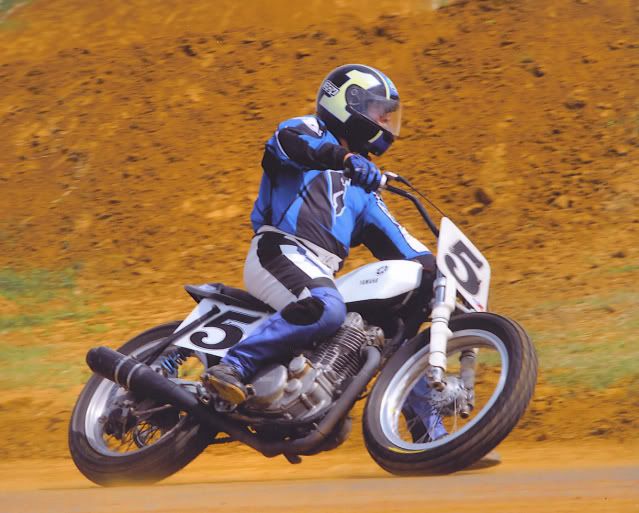One other thing to look for before you spring for a new solenoid; do carefully check/clean all your connections, but if that still doesn't fix it, check for 'hot spots' on your cables. The factory wire lugs are crimped on, and sometimes corrosion can get inside the wire insulation and eat enough of the wire away that it won't have enough cross-section left to carry full current. The wire will check fine for continuity and may look ok, but when you pull a heavy load on it, it will get warm at the bad point. The wires will heat under a heavy load anyway, but the bad spot will be hotter. If you find evidence of semi-melted insulation on any of the cable ends, that's another sure sign of a bad cable.
'78E original owner
'78E original owner



 And...after some ramblings...I'll get back to some XS question. So hold on...this is going to be a long post
And...after some ramblings...I'll get back to some XS question. So hold on...this is going to be a long post 

 DL followed the circuit back then, which was about 40 years ago. Just before the oil embargo Flat track was a fairly big motorcycle sport. DL made it up to national numbers 89, 78 and about 50 when he quit half way through a season on an Yamaha 750 twin.
DL followed the circuit back then, which was about 40 years ago. Just before the oil embargo Flat track was a fairly big motorcycle sport. DL made it up to national numbers 89, 78 and about 50 when he quit half way through a season on an Yamaha 750 twin.






 That would be helpful if I could post something like that. Larry gets an extra chicken dinner for his video
That would be helpful if I could post something like that. Larry gets an extra chicken dinner for his video  - NOW IT'S FOR SALE! $1,800 OBO
- NOW IT'S FOR SALE! $1,800 OBO
Comment